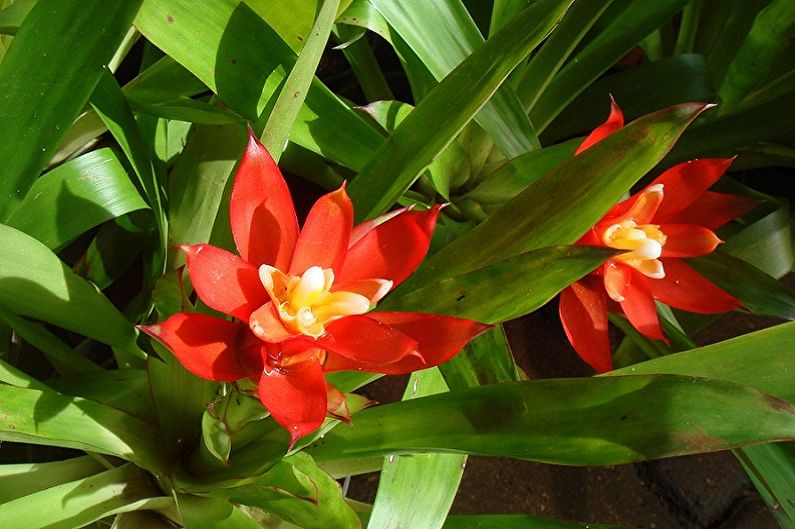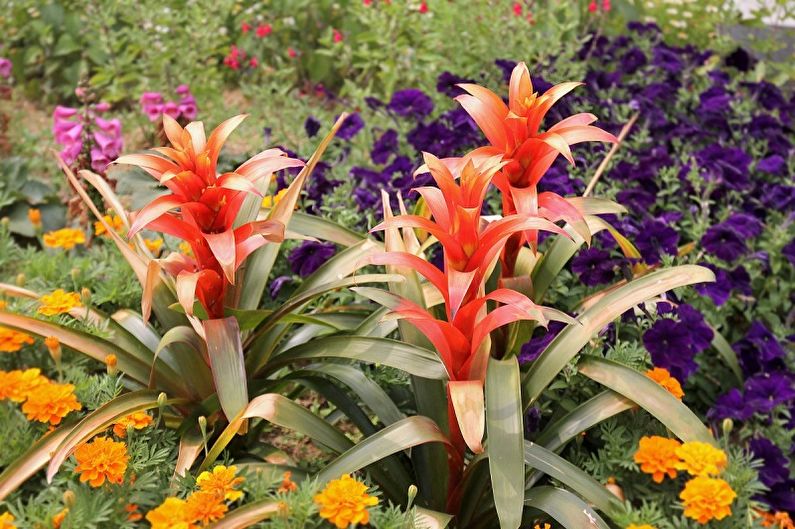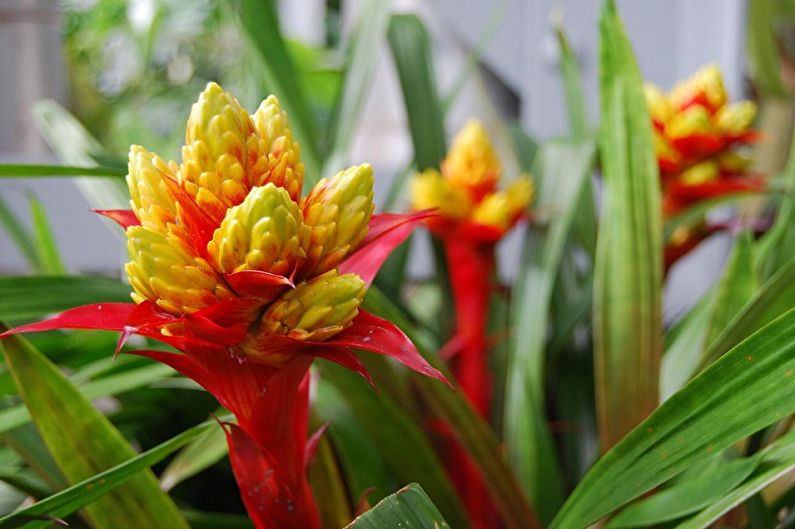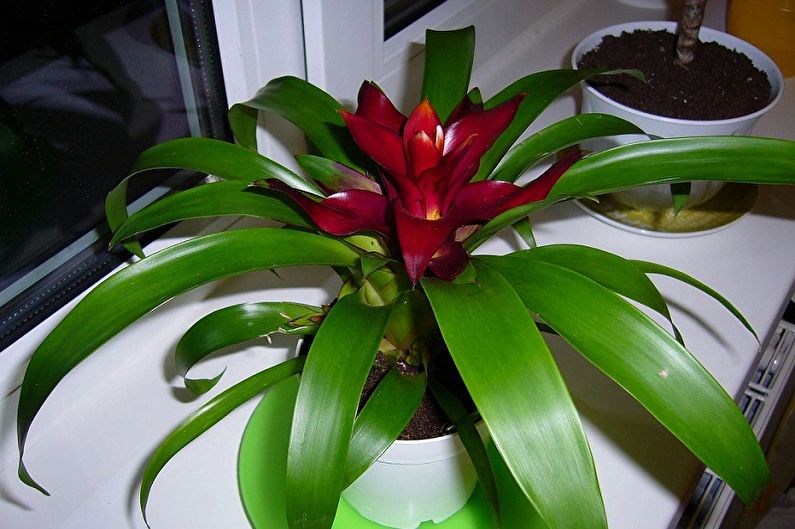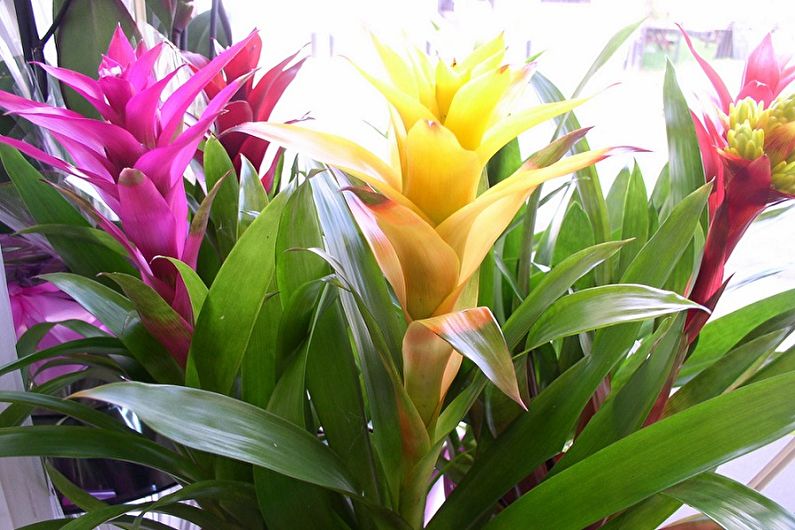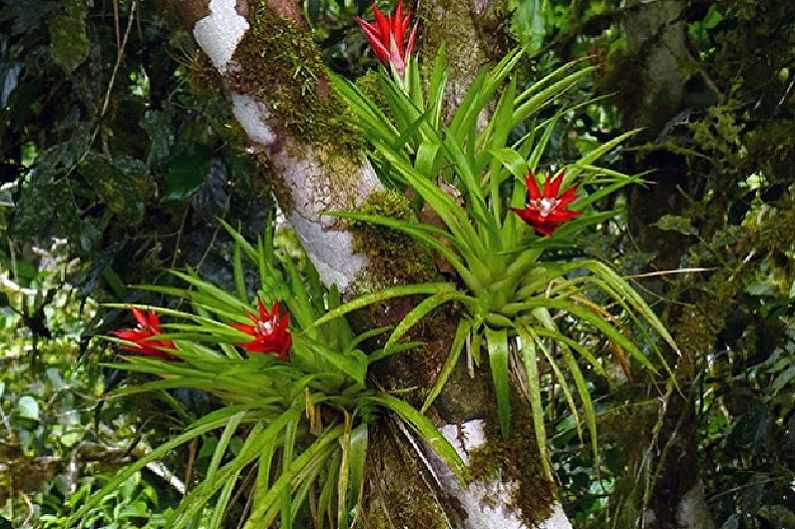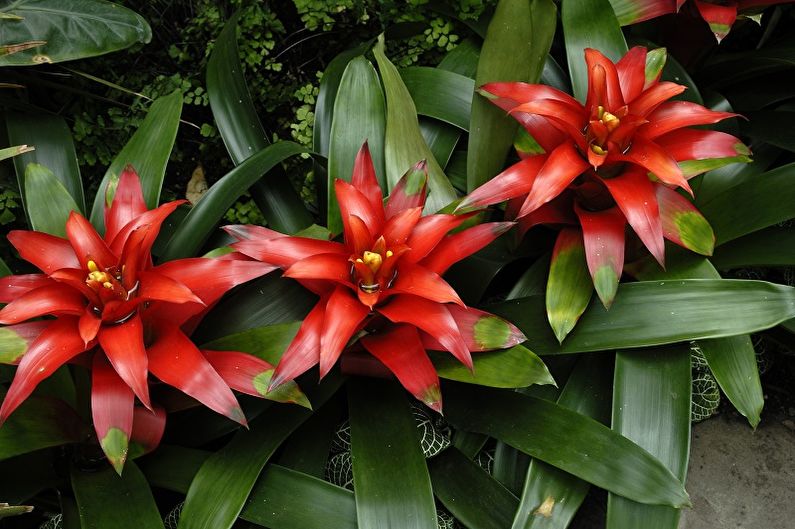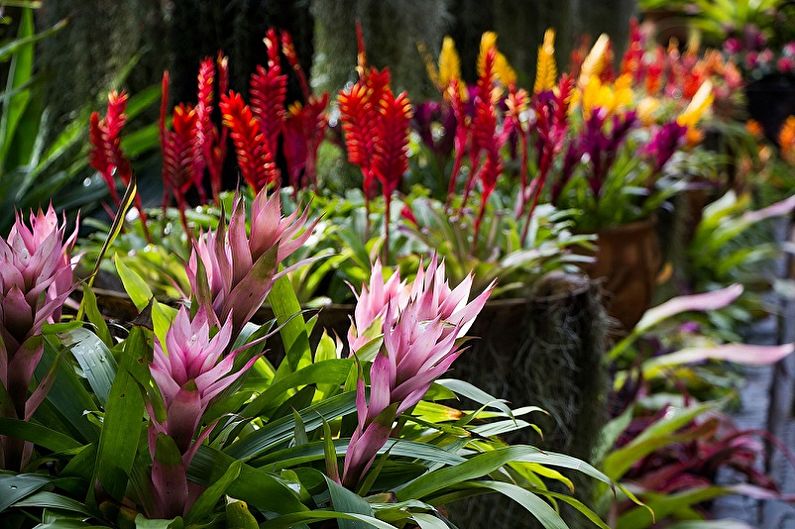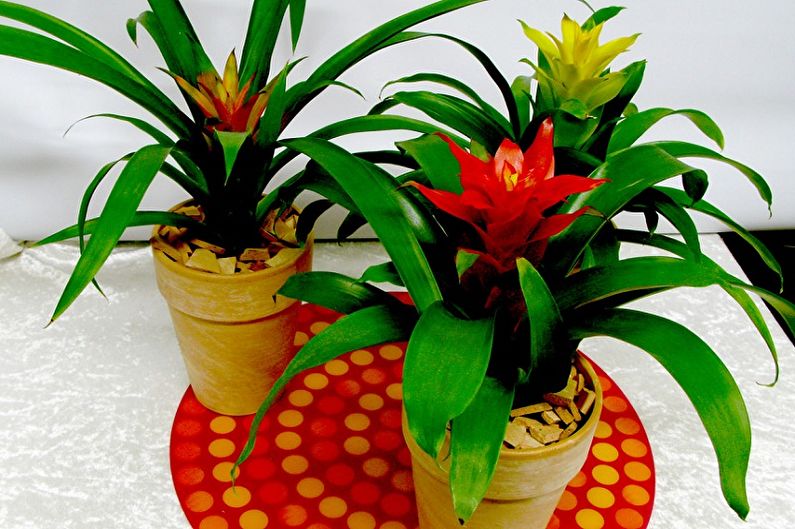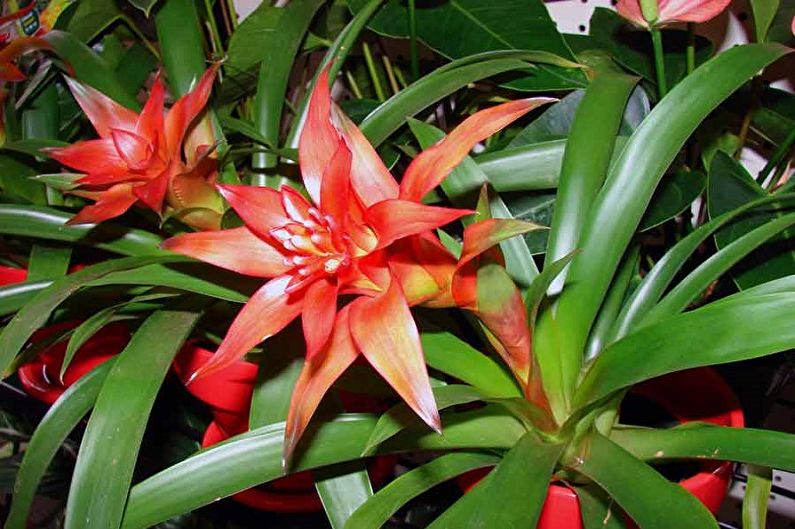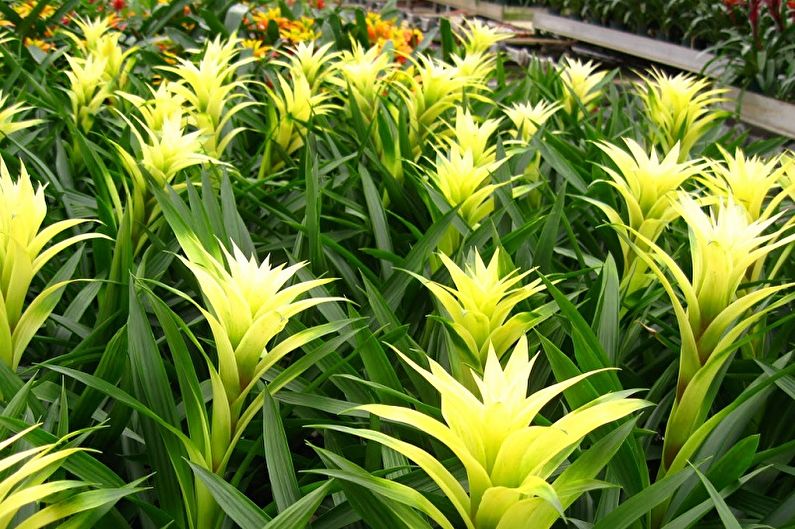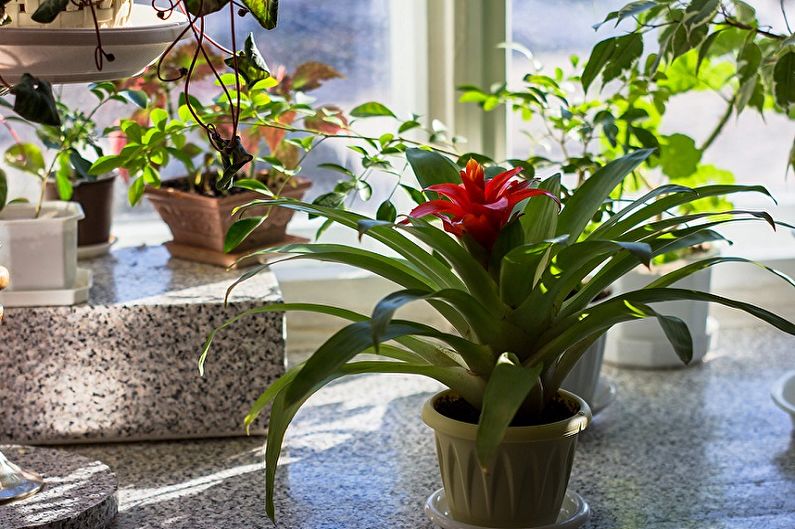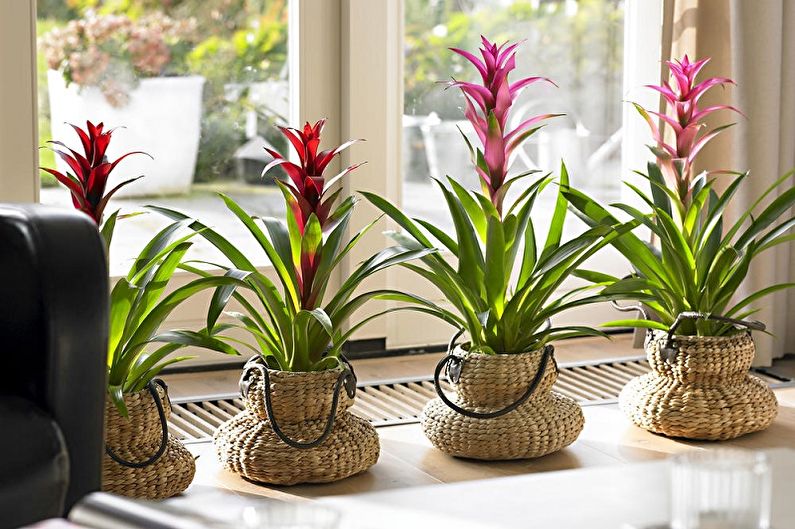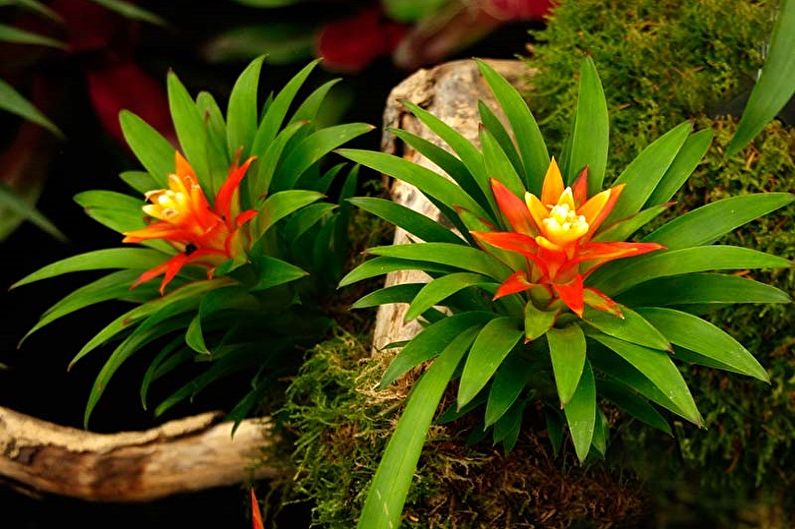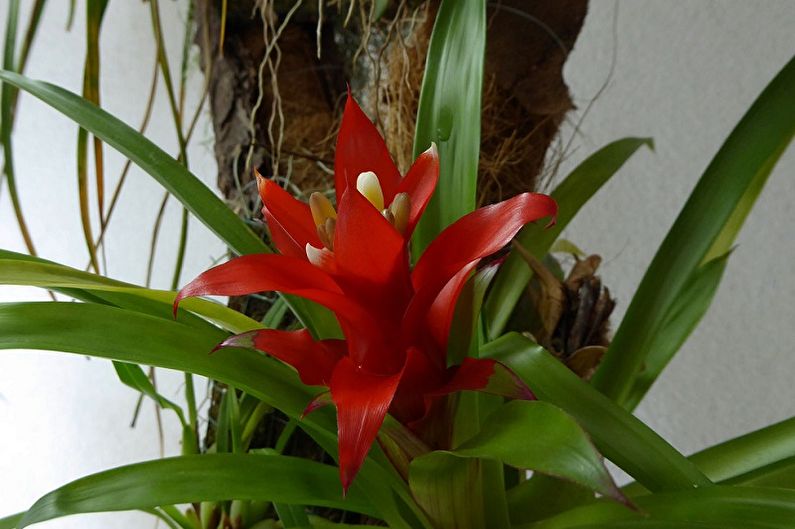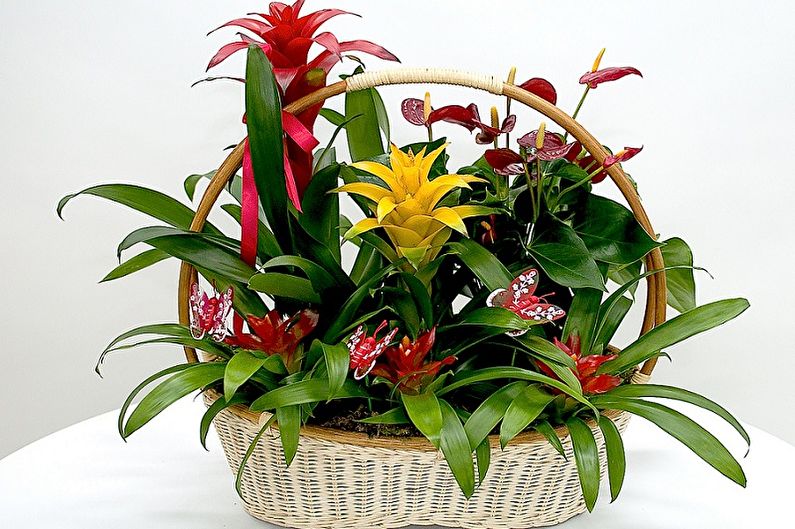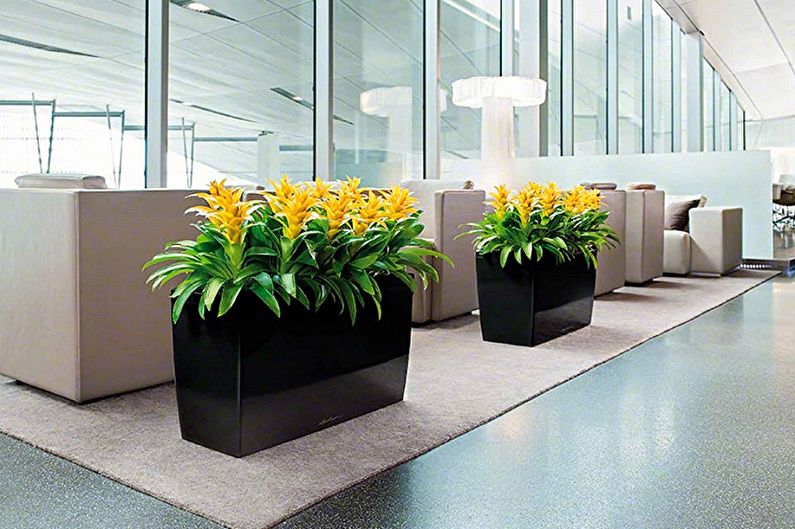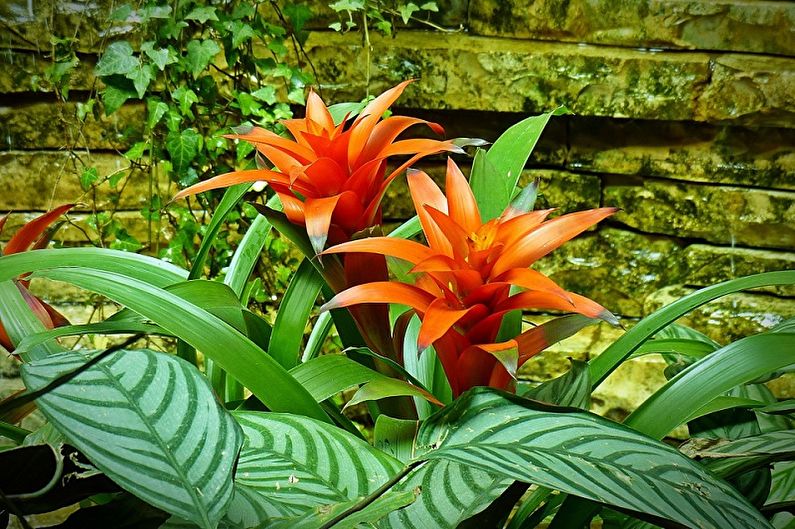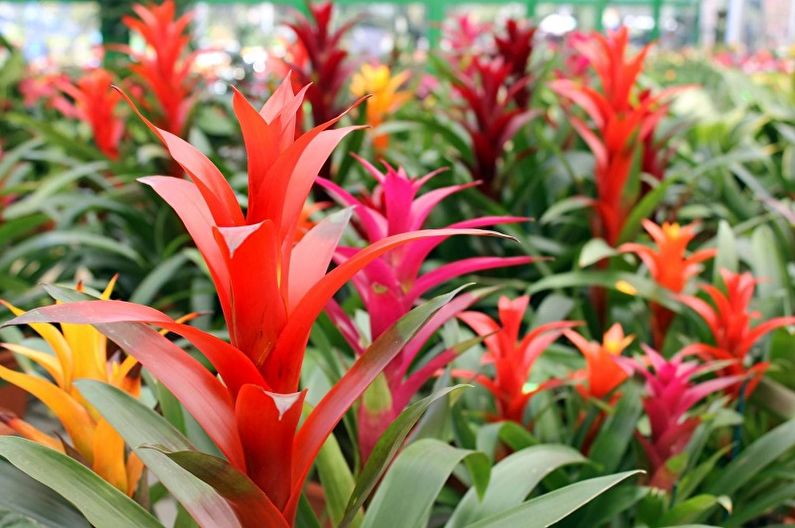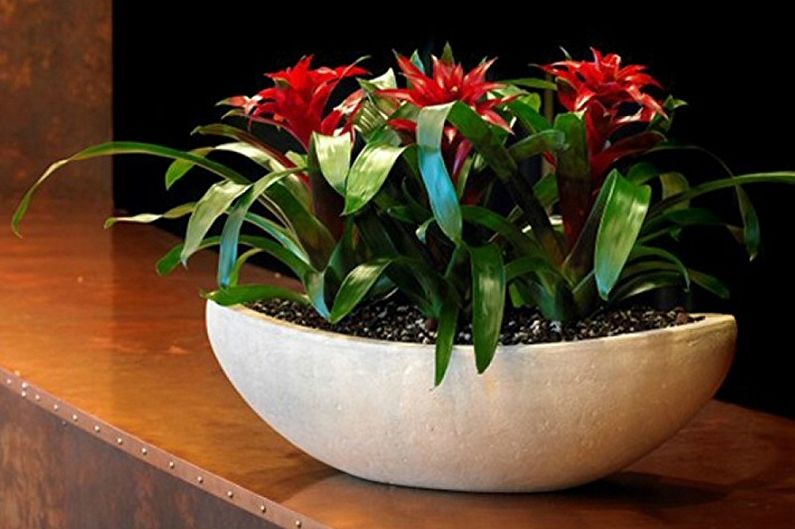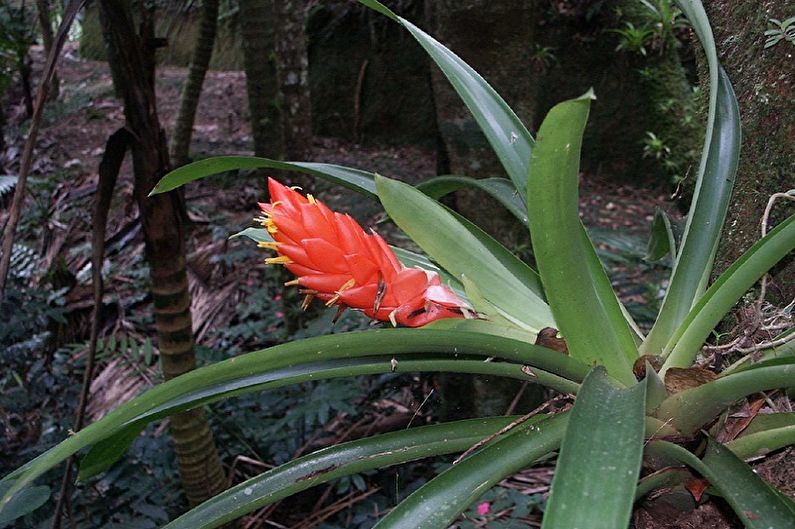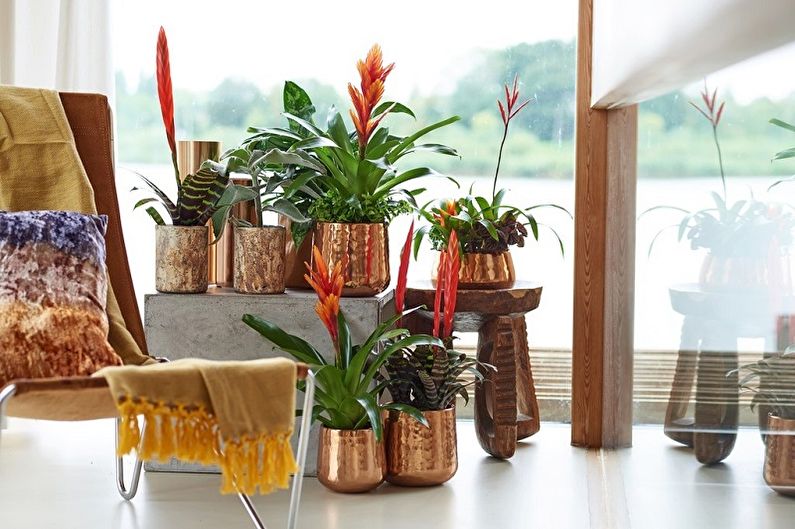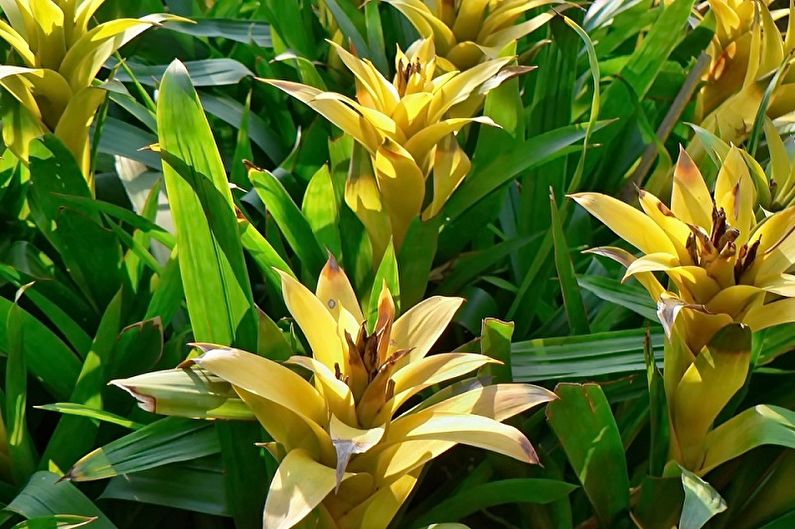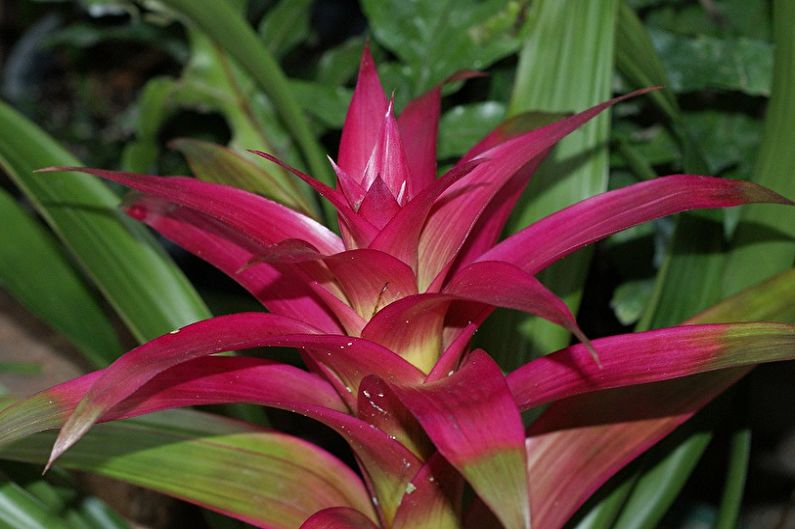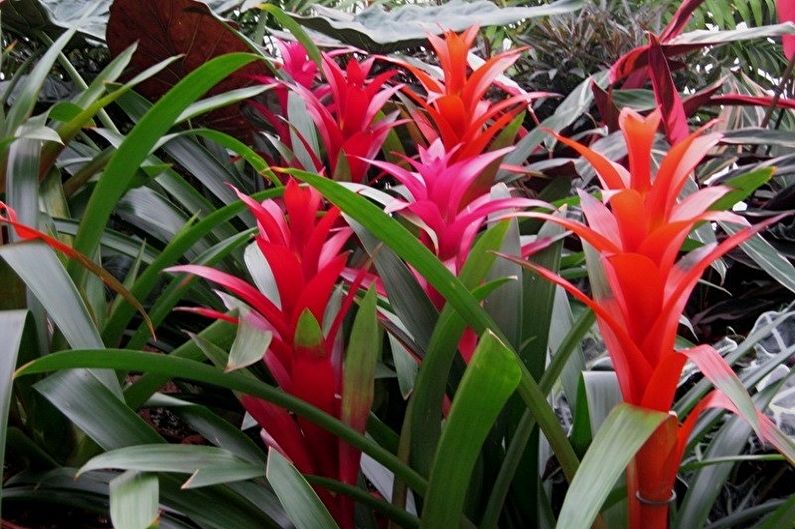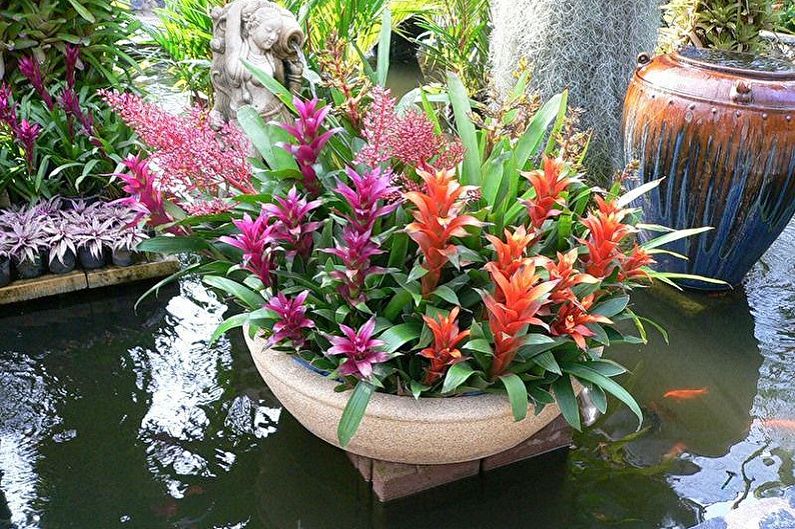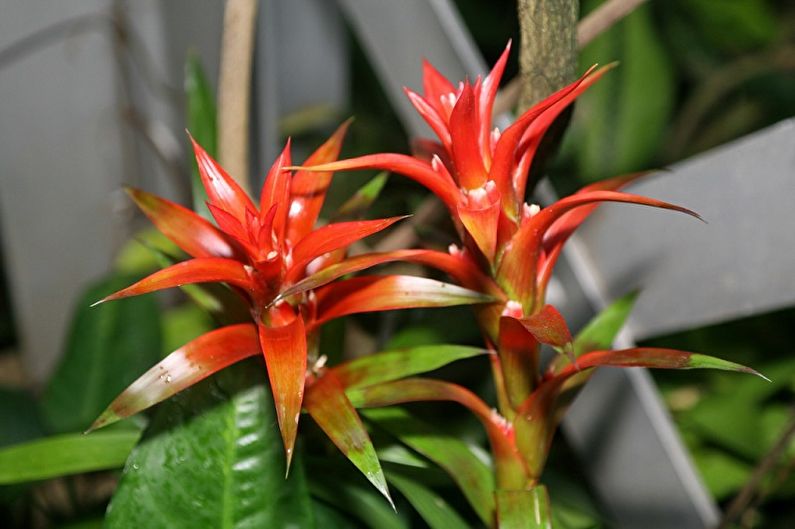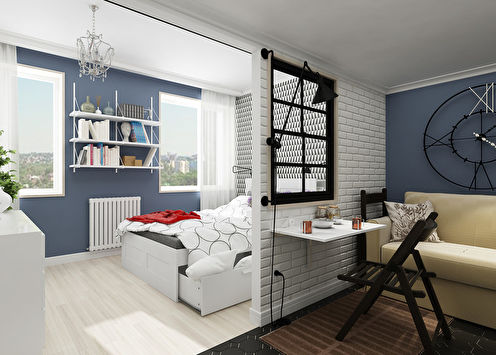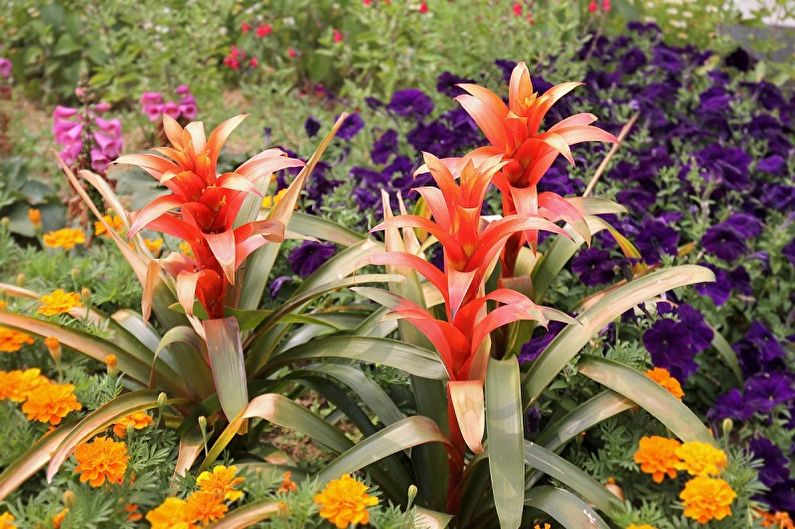
Guzmania is a charming and vibrant grassy perennial that cannot be confused with anything else. It is small and elegant, looks great at home in flowerpots. Florists love it for its decorativeness, variety and unusual appearance. Although this is a tropical plant, it does not need complicated care, it easily adapts to almost any conditions and does not cause problems. Colorful inflorescence pleases almost the whole season. Although after this the flower dies, new shoots begin to grow actively.
General characteristics
Spectacular guzmania native to the forests of Central and South America. She feels good in the tropics and thrives in the Caribbean. There are hundreds of evergreen varieties everywhere. In our country, breeders have long since brought out special decorative indoor forms of red, white, purple, yellow and orange.
In its structure, guzmania is an elastic root rosette, from which a bright spike-shaped inflorescence with colored leaves and small pale yellow flowers sprouts.
In nature, guzmania lives in rocky crevices and often settles on trees. Even a wild adult plant does not grow more than 80 cm, and the average size is 25–50 cm. The length of the leaves is 30–40 cm. They can be erect or arched, but almost always monophonic dark green.
The fleshy peduncle pecks in the spring and grows rapidly. In nature, bracts range from yellow to red. This inflorescence is called the "Sultan." It is its structure that attracts attention when the flowers themselves are miniature and inconspicuous. When they wither, the plant dies completely. In nature, it is replaced by side shoots. Thus the flower independently rejuvenates itself.
Rhizome is poorly developed. As with all plants of this family, it serves, mainly, only for fixing the flower. This must be considered when leaving. Flowering begins after 2 years. Colorful exotic flower will enliven any interior.

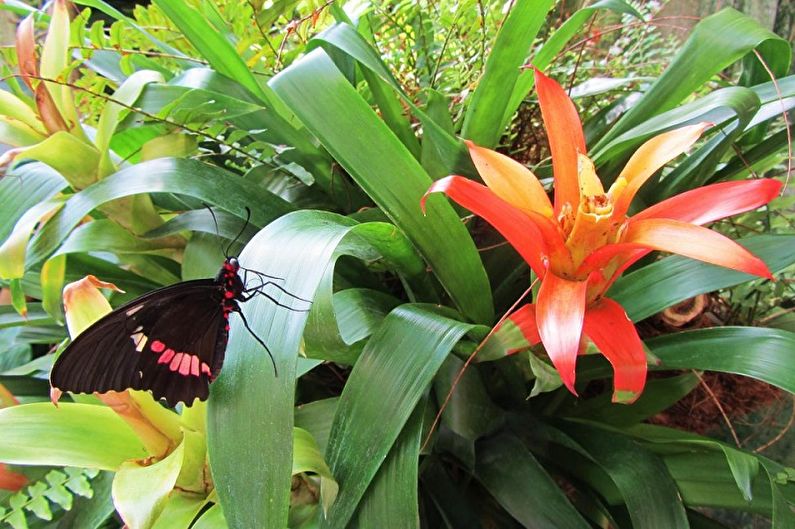
Types of Guzmania
Although the varieties of guzmania are huge and diverse, only a few of them are actively displayed in a culture or economy:
Guzmania mosaic
Now it is considered the most popular and unusual. On smooth green leaves - perpendicular stripes of a light shade. The plates themselves grow to 80 cm long. Raspberry bracts hardly differ from leaves, but shorter. They gather on relatively small thick peduncles. The flowering period lasts up to 3 months and starts in mid-summer.
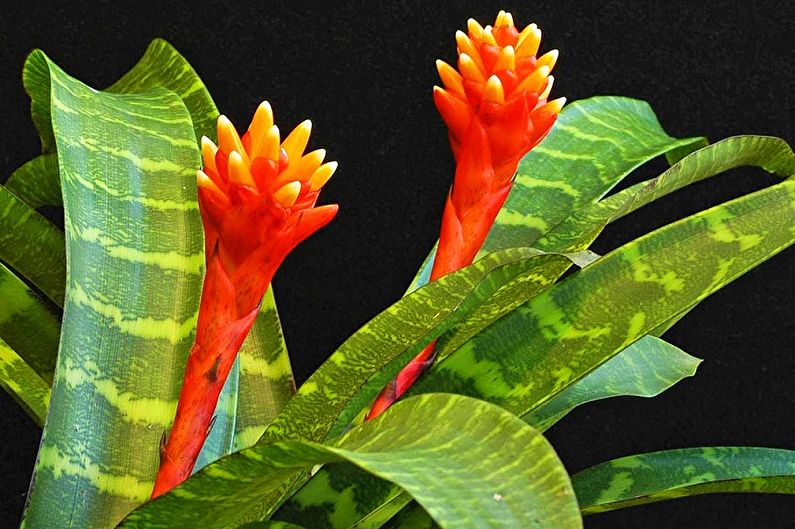
Guzmania one-banded
Its leaves are also decorated with yellow stripes, and the upper ones are darker than the lower ones. Bracts are short and dark, brown or brown. The inflorescence is a narrow one, with small flowers.
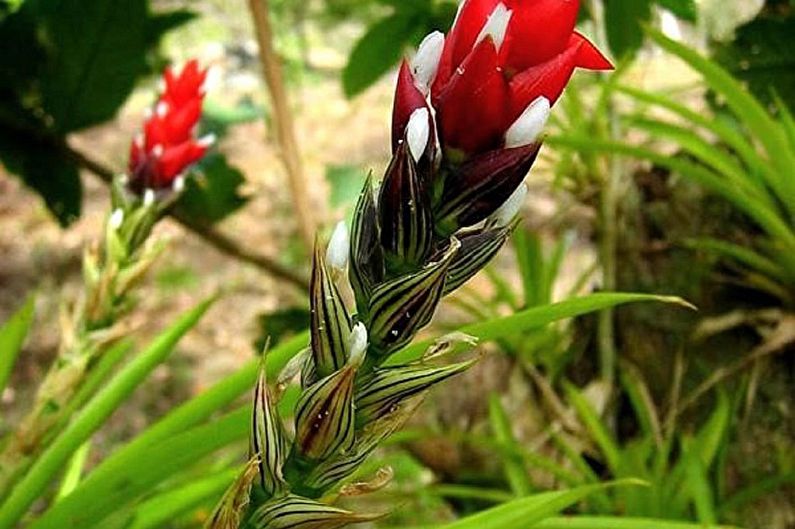
Guzmania blood red
Spectacular and bright breed with an unusual goblet outlet. In nature, this form is needed for the accumulation of moisture and nutritious organic matter. The thyroid inflorescence is not very remarkable, but it is impossible not to pay attention to the leaves themselves.
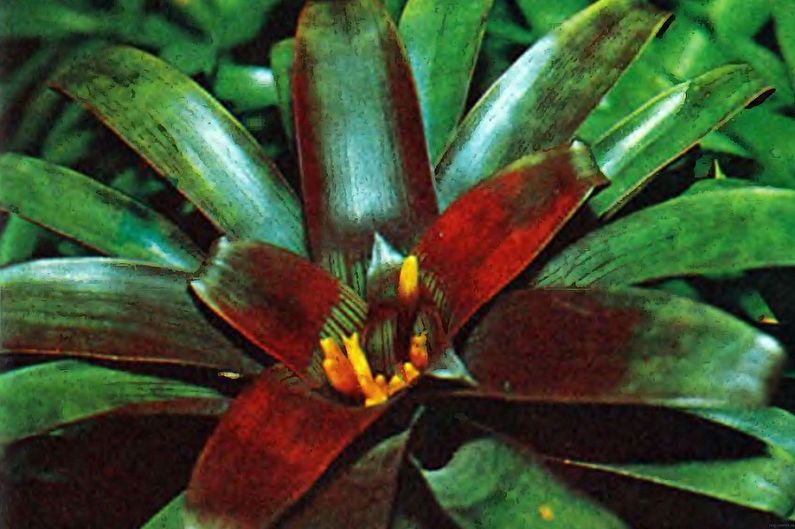
Guzmania Minor Rondo
Miniature variety, not more than 20–25 cm tall. The inflorescence is bright and compact, but it rises noticeably above a dark outlet.
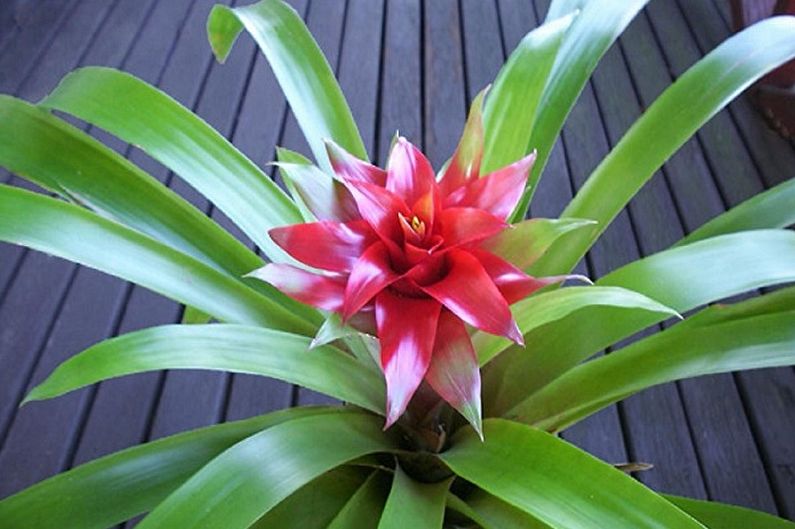
Guzmania Tsana
In contrast to the previous variety, this is the largest indoor view. The leaves of Guzmania Tsana are tall and long, up to 70 cm. A massive orange or red inflorescence rises above them.
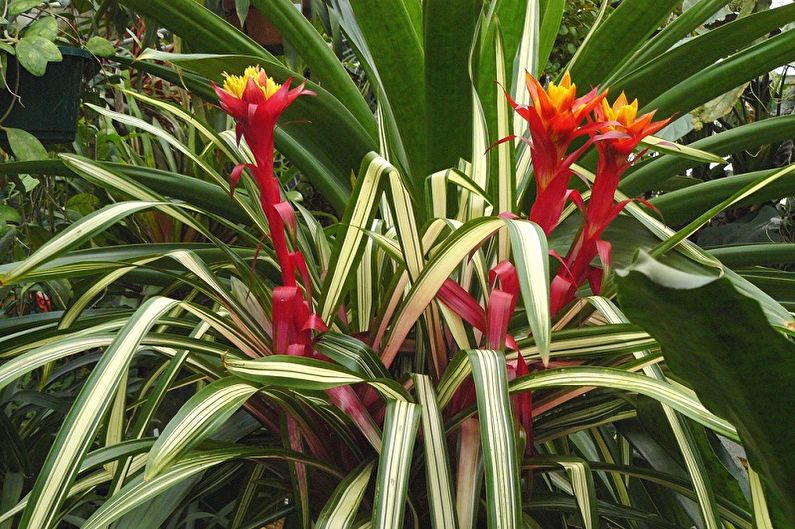
Guzmania Tempo
The main difference between this variety is light leaves. They contrast even brighter and more distinctly with fire-red bracts.

Guzmania reed
This is a grassy indoor variety with soft and bright green leaves up to 45 cm long. Bracts are pink or red, upright. This variety can bloom in December or March.
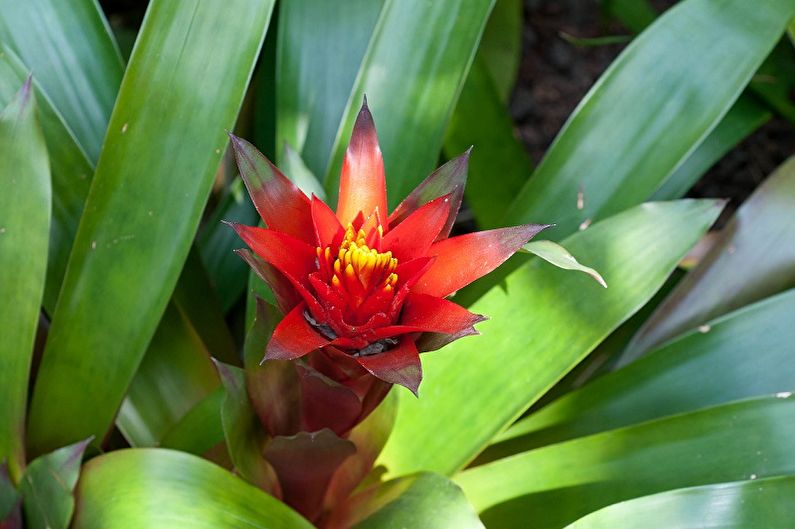
Guzmania Donatella Smith
This view is distinguished by the structure of the outlet.It is wide and funnel-shaped, up to 30 cm in diameter. The foliage is succulent and fleshy. The hue of the bracts ranges from yellow to orange.

Guzmania care
If you do not forget that this is a tropical plant, caring for it is quite simple.
- Guzmania does not tolerate sharp temperature changes, drafts, lack of sunlight. After flowering, it is important to take care of seedlings of lateral shoots in order to preserve the plant.
- Ideal soil is a loose and permeable substrate. Special mixtures are used, leaf soil, peat, coal, sand, crushed bark and needles, moss, charcoal. Soil mixtures are also suitable for orchids, but when planting, they need good drainage.
- Although guzmania loves the sun, direct rays are dangerous to its delicate leaves. Ideal temperature is about + 25C. The flower feels best in the summer. Before flowering, you need even more heat. The minimum winter temperature for life is above + 18C.
- Tropical plants always require moisture. They can and should be sprayed, especially with active growth, but you need to water it carefully, otherwise a weak rhizome will not be able to absorb such a volume and will begin to rot.
- During flowering, it is recommended to water the guzmania directly into the outlet. This mechanism was conceived by nature itself. But if the house is colder + 20C, you should not do this. If it is higher, there should always be water in the outlet. No need to wait until it runs dry. Add it gradually and completely change it once a month.
- For feeding, universal complex fertilizers are used. They can be entered every 3-4 weeks. During flowering - once every 10-14 days. It is important to carefully dilute the mixture so as not to burn the flower. A weak solution can also be poured into a power outlet.
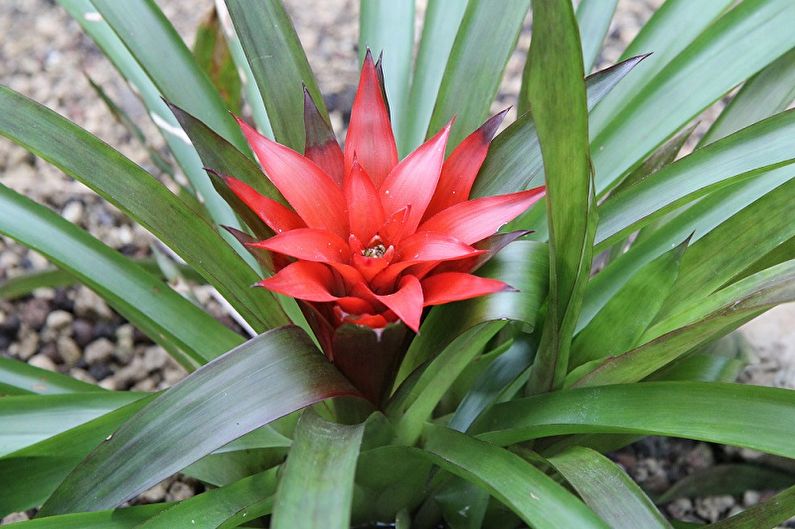
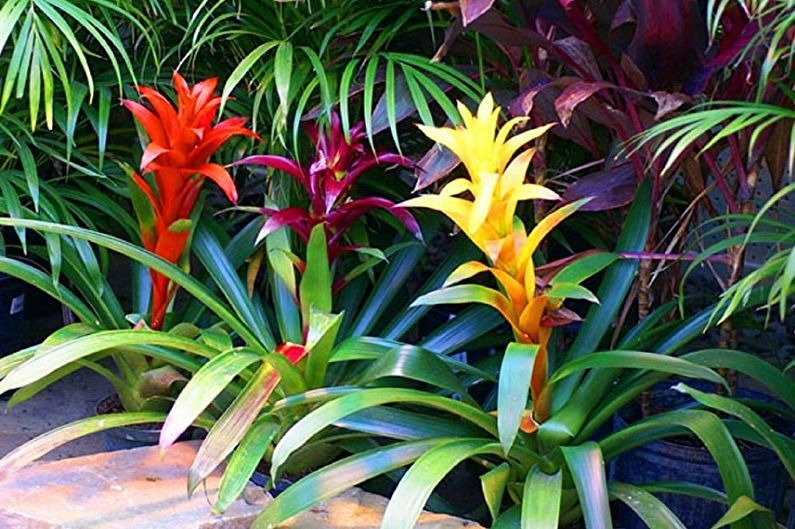
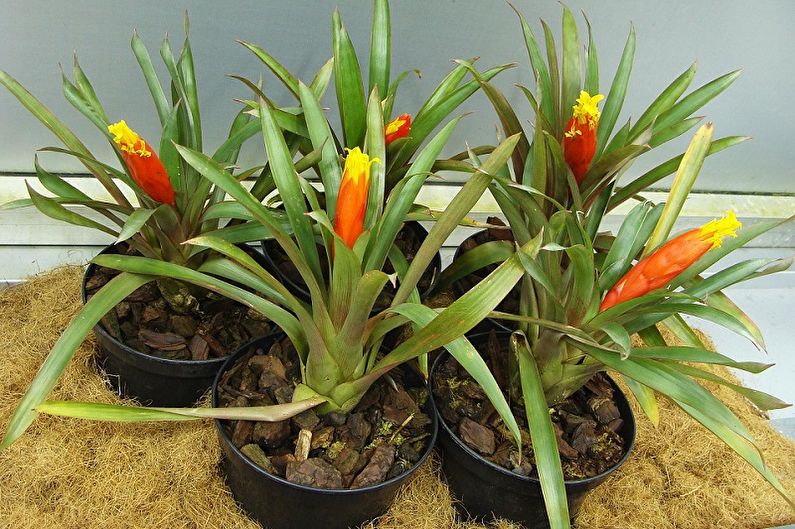
Guzmania transplant and breeding
If guzmania was bought immediately in a pot, you can leave it there. If in the shipping container, then after a couple of weeks a transplant is needed. Reproduction will have to think closer to flowering. If the plant does not bloom, it is transplanted once every several years in the warm season. Other reasons for transplanting are flower overgrowth or acidification of the soil.
The flower propagates by basal processes, which in life were dubbed by children. They gradually appear together with flowers, but begin to grow actively when the mother plant dies. A similar life cycle for the whole family. The main thing - do not separate the young shoots prematurely. Cut them off when they get stronger and reach at least 10 cm. Usually this happens after about 3-4 months, depending on the conditions. The shoots already have small roots. They can immediately be planted in pots with normal soil.
At home, guzmania is practically not grown from seeds. It is long and difficult. First you need to buy or collect seeds, treat them with a manganese solution, let it lie down. Then they are distributed over the sand-peat mixture and tightened with a film for several weeks at high temperature. A month after climbing the first shoots, they can be gradually transplanted.
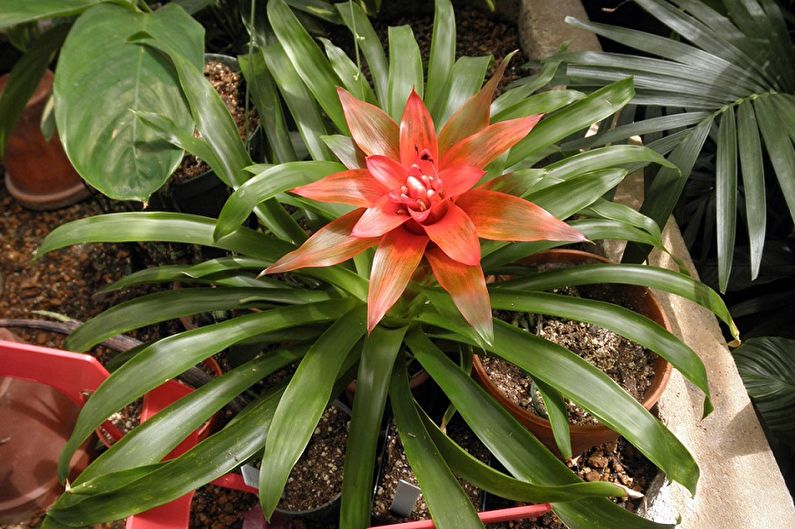

Pest and Disease Control
The main problems with guzmania arise from an excess of moisture or excessive dampness. This is the main reason for the occurrence of fungal diseases, which are almost impossible to cure, unless by removing damaged areas. This can lead to the death of such a small decorative flower. Therefore, it is important to observe the watering regime and monitor the conditions.
Of parasites in guzmania, spider mites, scutes and mealybugs can settle. To get rid of them, you need to treat the plant with insecticides and repeat the procedure for a week to consolidate the result.
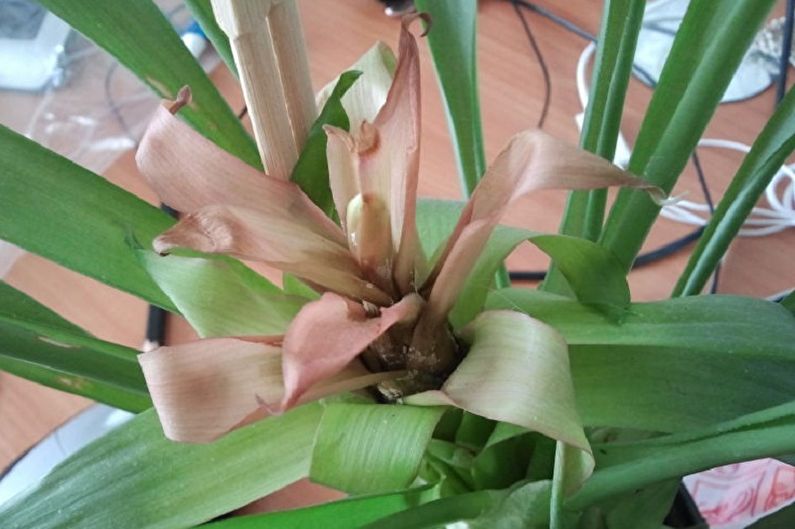

Guzmania - photo
For fresh ideas and inspiration, refer to our selection of photos! We have collected interesting solutions with guzmania so that you can understand how it looks and where it looks better!
